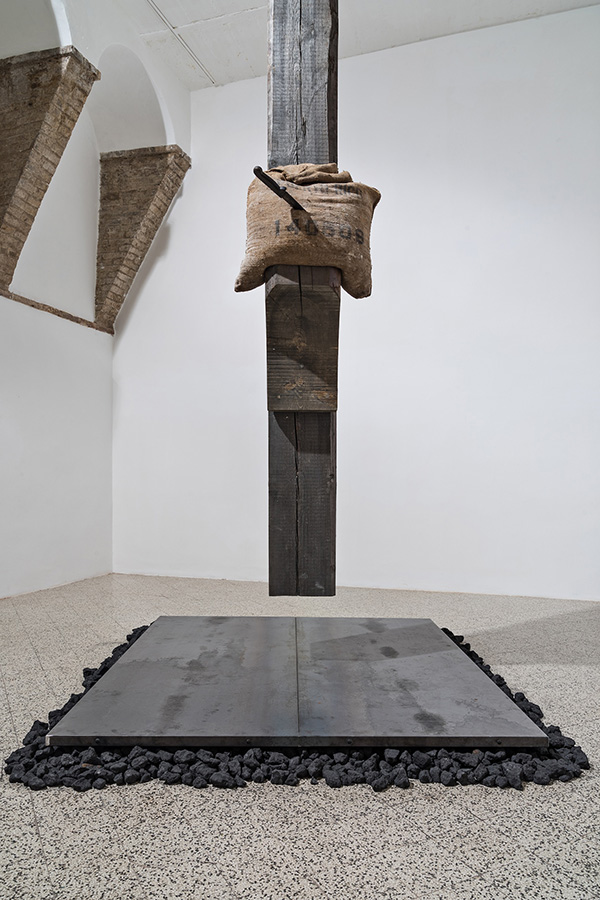ART CITIES:Habana-Jannis Kounellis
 Jannis Kounellis was born in Piraeus, Greece in 1936. World War II and the civil war (1946-49) were backdrops to his childhood. In 1956, he moved to Rome and by ‘60 was an active member of the Arte Povera Movement. Kounellis has long combined art and history with the immediacy and tangibility of the present.
Jannis Kounellis was born in Piraeus, Greece in 1936. World War II and the civil war (1946-49) were backdrops to his childhood. In 1956, he moved to Rome and by ‘60 was an active member of the Arte Povera Movement. Kounellis has long combined art and history with the immediacy and tangibility of the present.
By Dimitris Lempesis
Photo: Galleria Continua Archive
Jannis Kounellis returns once more to Habana for a solo exhibition at Centro de Arte Contemporáneo Wifredo Lam. Jannis Kounellis has been a major figure in Contemporary Art for over 50 years. Influenced by artists such as Alberto Burri, Lucio Fontana, Jackson Pollock and Franz Kline, and both within the context of Arte Povera and outside of it, Kounellis has throughout his career interrogated and extended the boundaries of contemporary art, and in particular the possibilities of painting. While still a student he had his first solo exhibition, titled “L’alfabeto di Kounellis”, at the Galleria la Tartaruga in Rome, in 1961. These early works, the artist executes mathematical symbols, numbers and letters in the form of large lines, painted with a brush and applied by stencil, that create words, or just signs. His participation in Arte Povera, the artistic movement that follows the theory by Germano Celant is marked by some decisive biographical moments, he participated in the exhibitions “Art Povera + Azioni Povere” at the Old Arsenals of Amalfi in 1968 and “Art Povera” in 1969, in Genoa, in the same year, at the Galleria L’Attico in Rome, he created one of the most sensational exhibitions in 20th Century art when he displayed a work in which 12 live horses were tethered to the sides of the room. Kounellis explains that it was almost a formal idea. “What interested me, was that the horse was part of the wall”. From then on, he starts creating big facilities using natural elements or objects that remember the daily thing as real people and alive animals, stones, fatty plants, powdered coffee, combed wool, empty or filled grain jute bags, the flames produced in the burning of hydrogen in chlorine, and objets trouvés such as fragments of classic statue copies, oil painted lamps, doors, bed structures, closets and train beams. When trying to understand the meaning of the materials used by Kounellis, as well as to understand its hidden value, it is always opportune to observe the evocative capacities, the possible literary reminiscences deductible from its presentation. “Clay is matter, iron is matter, paper is matter, and we need to expand the concept of raw material: matter means to draw, matter means to acquire a meaning, a sense. A hundred pounds of coal: not plastic colored as coal, not an abstract and unreal weight. Weight hides its own history, its own mortality. The things become realer”.
Info: Centro de Arte Contemporáneo Wifredo Lam, San Ignacio No.22, Esquina a Empedrado, La Habana, Duration: 24/11/16-28/1/17, Days & Hours: Tue-Sat 10:00-17:00, www.wlam.cult.cu

